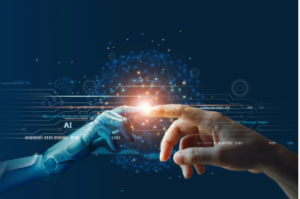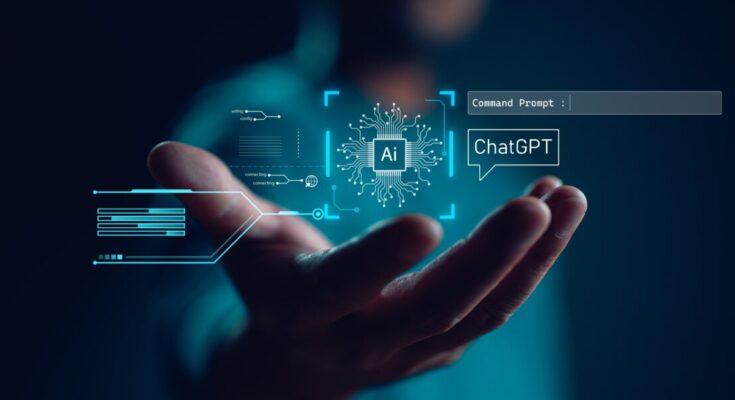Technology is constantly evolving, and the pace at which new innovations are introduced to the market is staggering. In the USA, technological advancements are not just changing industries but reshaping the way people live, work, and interact. From artificial intelligence (AI) to quantum computing, these trends are paving the way for the future. This article will explore some of the most trending technologies in the USA, examining their significance, the industries they impact, and the potential they hold for shaping the future.

1. Artificial Intelligence (AI) and Machine Learning
Artificial intelligence (AI) is one of the most transformative technologies of the 21st century. In recent years, AI and machine learning (ML) have advanced in remarkable ways, leading to groundbreaking developments in various sectors, including healthcare, finance, entertainment, and customer service.
AI refers to the simulation of human intelligence in machines that are programmed to think and act like humans. Machine learning, a subset of AI, involves the creation of algorithms that allow computers to learn from data without explicit programming. In the USA, AI is being used to automate tasks, enhance decision-making processes, and create personalized experiences for users.
In healthcare, AI is revolutionizing diagnostics and treatment plans. Machine learning algorithms are being employed to analyze medical data, identify patterns, and assist doctors in making more accurate diagnoses. AI-powered systems can also predict patient outcomes and recommend personalized treatment plans.
AI is also making waves in the financial sector, where it is used for fraud detection, risk assessment, and automated trading. In customer service, AI chatbots are improving user experiences by providing instant responses to customer inquiries. With these developments, AI is enhancing efficiency and enabling businesses to provide more personalized and effective services.
2. 5G Technology
5G, the fifth generation of wireless technology, is one of the most eagerly awaited advancements in telecommunications. With faster speeds, lower latency, and higher capacity, 5G is expected to revolutionize various industries by enabling new capabilities and improving existing technologies. In the USA, major telecommunications companies have already begun rolling out 5G networks, and the impact is already being felt.
One of the most significant benefits of 5G is its ability to support the Internet of Things (IoT) on a much larger scale. IoT refers to the network of connected devices that communicate with each other and share data. 5G’s low latency and high bandwidth make it ideal for IoT applications, enabling devices to communicate in real time without delays.
In healthcare, 5G has the potential to enable telemedicine and remote surgery. Surgeons can use augmented reality (AR) and virtual reality (VR) tools to perform surgeries remotely, while doctors can monitor patients in real time, no matter where they are located.
The gaming industry is also benefiting from 5G technology. With faster download speeds and reduced latency, players can enjoy a more immersive experience with cloud gaming and real-time multiplayer interactions. The enhanced connectivity is also expected to support the growth of autonomous vehicles, as they will require a constant, fast, and reliable connection to communicate with other vehicles and infrastructure.
3. Blockchain and Cryptocurrencies
Blockchain technology has emerged as one of the most disruptive innovations in recent years. At its core, blockchain is a decentralized and distributed ledger system that records transactions across multiple computers in a way that ensures transparency, security, and immutability. While blockchain is most commonly associated with cryptocurrencies like Bitcoin and Ethereum, its potential applications extend far beyond digital currency.
In the USA, blockchain technology is being explored for a variety of use cases. For example, in supply chain management, blockchain can provide a transparent and immutable record of every transaction, making it easier to track goods and prevent fraud. In the healthcare industry, blockchain is being used to store patient records securely, giving patients greater control over their personal data.
Cryptocurrencies, which rely on blockchain technology, have seen a surge in popularity in recent years. The rise of Bitcoin, Ethereum, and other digital currencies has led to increased interest from investors, businesses, and governments. In the USA, cryptocurrencies are being integrated into financial services, with companies offering crypto wallets, payment gateways, and investment products.
Despite its potential, blockchain and cryptocurrencies face challenges, including regulatory uncertainty, scalability issues, and concerns about energy consumption. However, as the technology matures, it is likely to play an increasingly important role in various industries, from finance to logistics.
4. Quantum Computing
Quantum computing is an emerging field that promises to revolutionize computing power by leveraging the principles of quantum mechanics. Unlike classical computers, which process data in binary form (0s and 1s), quantum computers use quantum bits (qubits), which can represent both 0 and 1 simultaneously. This enables quantum computers to perform certain types of calculations much faster than traditional computers.
In the USA, tech giants like IBM, Google, and Microsoft are at the forefront of quantum computing research and development. While quantum computing is still in its early stages, it holds the potential to solve problems that are currently intractable for classical computers. For example, quantum computers could revolutionize drug discovery by simulating complex molecular structures at an unprecedented speed. They could also be used to optimize supply chains, improve machine learning algorithms, and enhance cybersecurity.
The development of quantum computing presents significant challenges, including issues related to qubit stability, error correction, and scalability. However, as research progresses, quantum computers are expected to become a powerful tool for solving some of the world’s most pressing problems.
5. Augmented Reality (AR) and Virtual Reality (VR)

Augmented reality (AR) and virtual reality (VR) are technologies that have gained significant traction in recent years, offering immersive experiences that blur the lines between the digital and physical worlds. While VR creates entirely virtual environments, AR overlays digital information onto the real world, enhancing the user’s perception of their surroundings.
In the USA, AR and VR are being used in a wide range of applications, from entertainment and gaming to education and healthcare. In the gaming industry, VR headsets are enabling players to immerse themselves in virtual worlds, creating more engaging and interactive experiences. Similarly, AR applications are transforming retail by allowing customers to try on clothes virtually or visualize how furniture will look in their homes.
In healthcare, VR is being used for therapeutic purposes, such as pain management and mental health treatment. AR is also improving surgical procedures by providing surgeons with real-time, 3D visualizations of the patient’s anatomy, enhancing precision and reducing risks.
The potential for AR and VR in education is also enormous. These technologies can create interactive learning environments that engage students and provide hands-on experiences. For example, students can use VR to explore historical events or visit distant planets, while AR can bring textbooks to life with interactive 3D models.
6. Autonomous Vehicles
Autonomous vehicles (AVs) are vehicles that are capable of sensing their environment and operating without human intervention. These vehicles rely on a combination of sensors, cameras, radar, and AI algorithms to navigate and make decisions on the road.
In the USA, companies like Tesla, Waymo (a subsidiary of Alphabet), and Uber are leading the development of autonomous vehicles. While fully autonomous cars are not yet commonplace, significant progress has been made in creating self-driving vehicles that can operate in certain conditions.

The potential benefits of autonomous vehicles are enormous. AVs could reduce traffic accidents caused by human error, improve traffic flow, and make transportation more accessible to people with disabilities or those unable to drive. In addition, autonomous vehicles could revolutionize industries like logistics and transportation by enabling self-driving trucks to deliver goods more efficiently.
However, the widespread adoption of autonomous vehicles faces several challenges, including regulatory hurdles, safety concerns, and technological limitations. For example, AVs must be able to handle complex and unpredictable road conditions, such as adverse weather or construction zones.
7. Biotechnology and Gene Editing
Biotechnology is another rapidly advancing field that is transforming healthcare, agriculture, and other industries. One of the most promising areas of biotechnology is gene editing, particularly with the advent of CRISPR-Cas9, a revolutionary technique that allows scientists to edit genes with unprecedented precision.
In the USA, gene editing is being used to develop new treatments for genetic disorders, such as sickle cell anemia and cystic fibrosis. By editing the DNA of patients, scientists are working to correct genetic mutations and potentially cure previously untreatable diseases.
Gene editing also holds promise for agriculture, where it can be used to create crops that are more resistant to diseases, pests, and environmental stresses. In addition, biotechnology is being explored for environmental applications, such as using microbes to clean up oil spills or convert waste into renewable energy.
While the potential of gene editing is vast, ethical concerns and regulatory challenges remain. There are debates over the safety of gene editing, particularly when it comes to editing human embryos, and questions about the long-term consequences of altering the genetic code.
8. Robotics and Automation
Robotics and automation technologies have been steadily advancing in recent years, leading to the creation of more intelligent and versatile robots. These robots are being used in various industries, including manufacturing, healthcare, logistics, and agriculture.
In manufacturing, robots are improving productivity by performing repetitive tasks with greater speed and precision. In healthcare, robots are assisting in surgeries, delivering medication, and providing companionship to patients. Autonomous robots are also being used in agriculture to plant crops, monitor soil conditions, and harvest produce.
The growing use of robots in the workforce has raised concerns about job displacement, as automation has the potential to replace human workers in certain industries. However, robotics experts argue that automation will create new jobs in fields such as robotics maintenance, programming, and AI development.
Conclusion
The USA continues to be a hub for technological innovation, with new trends and advancements emerging regularly. From AI and 5G to blockchain and quantum computing, these technologies are transforming industries and improving lives in ways that were once thought impossible. While challenges remain, the potential of these innovations is immense, and they hold the key to shaping the future of technology and society. As we move forward, it will be fascinating to see how these technologies evolve and how they will continue to shape the world around us.
